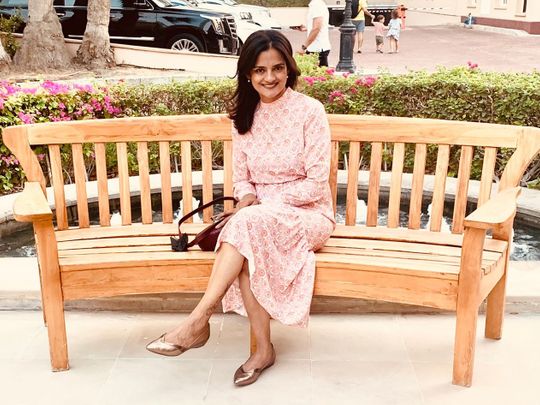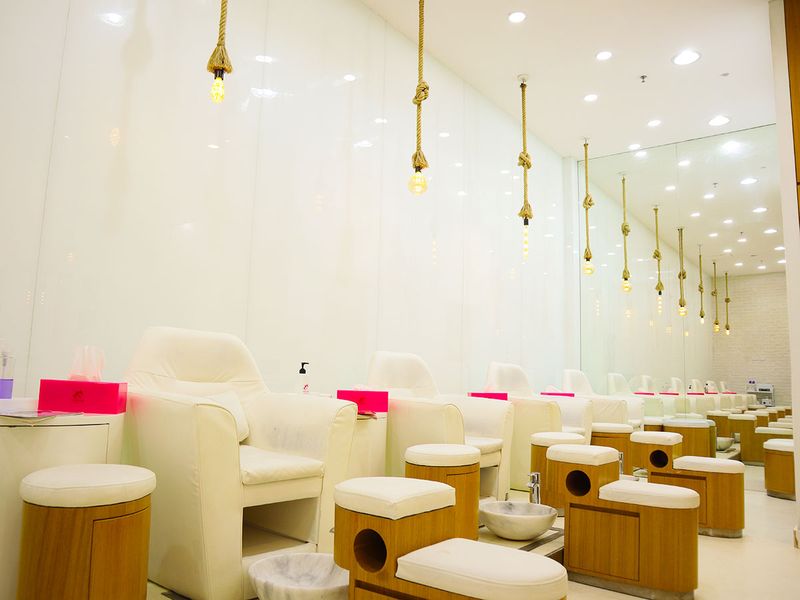
Highlights
Dubai-based Indian expat Sandhya Narayan invested roughly Dh500,000 to open her first salon in Al Warqa in 2007 after spotting a gap in the community for a women’s salon. A decade later she ploughed back profits from the business to open a second branch in Al Barsha. Here’s how she went about financially managing the business.
Dubai: Dubai-based Indian expat Sandhya Narayan, when living in Al Warqa about 15 years ago, had to travel for almost 20 minutes from her home to get to the nearest salon.
After having a child, this meant having to choose a day when her spouse was around to take care of the baby, coupled with fuel expenses and the time spent on travelling. This is what prompted her to capitalise on a gap in her community and enabled her to set up a women’s salon back in 2007.
“A predominately Emirati community, there were only a few residential buildings and one commercial building in Al Warqa at that time. The rest were all houses that belonged to Emiratis. While the commercial building housed some basic amenities including a barber shop, dry cleaning service and a chemist, there was no women’s salon in the entire area. I saw this as an opportunity to start a small business with Sandhya Beauty Salon.”
Funding the business
Sandhya banked on personal savings built over the years, end-of-service money from a decade-long job and a small personal loan (one-fourth of the total investment) to start her salon business. She had to make an investment of roughly Dh500,000 to get things off the ground. This included buying the only available shop for sale in the only commercial building in Al Warqa and rebranding which added Dh100,000 to the initial budget. Then came setting up the salon, interior designing, licensing, annual rent, hiring staff and more.

“As a first-time entrepreneur my learning curve was steep. Getting the initial investment together, including the personal loan, was only the beginning. We had hired an interior design agency that was very expensive. Closer to the launch date, we completely ran out of money and needed to inject more funds. But once we opened the salon, business picked up almost immediately helping us to slowly breakeven. Even today, when there are 16-18 women’s salons in that area, we have been able to retain our loyal customers. We definitely had a first-mover advantage, and our repeat footfall has always been high.”
The experience of launching the first salon made the opening of the second branch in Al Barsha slightly easier, Sandhya shared. “When the second branch opened in 2017, we negotiated a better deal for the space from an existing business, therein making one-fourth of the investment compared to the first one in Al Warqa. We selected contractors who were less expensive yet good at their work that helped us to keep our rebranding and interior design expenses to roughly Dh75,000. Importantly, we could entirely fund the second salon opening with profits generated from the first. Within 6-8 months of opening, the second salon broke even and started generating profits within 12-16 months. This helped us to buy the adjoining shop, expand the salon within a year of opening, that too without halting operations.”
Accounting for on-going expenses
Operating two salons in Dubai, Sandhya stressed on the importance of keeping a close eye on on-going expenses. In her case, it includes rent, licensing, salaries, purchasing products and marketing for both salons.
Staff salary and accommodation are two other big expense heads for Sandhya. Besides the on-going expenses, she spent around Dh8,000 to install a customer management system software to integrate data from both the salons in one place, seamlessly offering pricing and promotion details online. “This was a one-time investment that helped us to streamline processes while also gathering crucial customer data all in one place. In terms of marketing, we spend approximately Dh10,000-12,000 annually on Google, Facebook and other forms of advertising. We prefer passing on benefits to customers through discounts and happy hours, therein gaining repeat footfall, rather than spending a lot on advertising.”
There are certain other one-off expenses too, she added. “After 14 years, in June 2021 we completely renovated the Al Warqa salon spending a total of Dh100,000, which also came from the profits generated by the salons. However, such expenses must be accounted for carefully by planning the possibility of making payments to contractors in instalments as well as the option to make staggered payments on credit card as opposed to coughing up a large amount in one go.”
Financially sustaining the business through COVID-19
“It was exceptionally challenging to financially sustain the business since the pandemic hit,” Sandhya admitted. “While we received a three-month rent relief for our Al Barsha salon and a reduction on Dubai Municipality fee, two months (April-May 2020) when the salons were closed were very difficult. Revenue was zero for those couple of months, although we still had ongoing expenses.”
In addition, due to COVID-19 related protocols, both salons are still operating at a reduced capacity therein impacting revenue per square feet. But everyday operating cost has increased by 20-30 per cent as the salons now spend a significant amount on PPE (personal protective equipment) kits, disposable masks, gloves, face shields, towels, sheets and sanitisers.
“In fact, when we reopened after the lockdown in 2020, we had to spend a minimum of Dh4,000 every time we took the PCR (polymerase chain reaction) tests, coupled with Dh2,000 for a one-time thorough sanitisation service for both the salons by an approved agency. Importantly, the salons have survived and are now doing well due to the hard work of our staff. And I intend to pay back the portion of their salaries that was reduced for two months when the salons were closed in arrears.”
You’ve to know when to stop
As a message to fellow solopreneurs, Sandhya said, “I quit a well-paying job to start my salon, and today even after many challenges if I had to take the decision again, I wouldn’t do it differently. If you have an entrepreneurial dream, it’s important to pursue it no matter what. But it is crucial to do thorough research and groundwork. It is okay to take risks but only after weighing in the pros and cons.”
“It is also important to know when to stop. For example, along with the two salons in Dubai, I had set up two more in India, in New Delhi (2011) and Mumbai (2015). Even though the business prospects were promising, I had to shut down the salon in New Delhi within four years due to operational and logistics issues. The salon in Mumbai was a COVID-led casualty. I had to take some hard calls to sustain the business,” she concluded.





